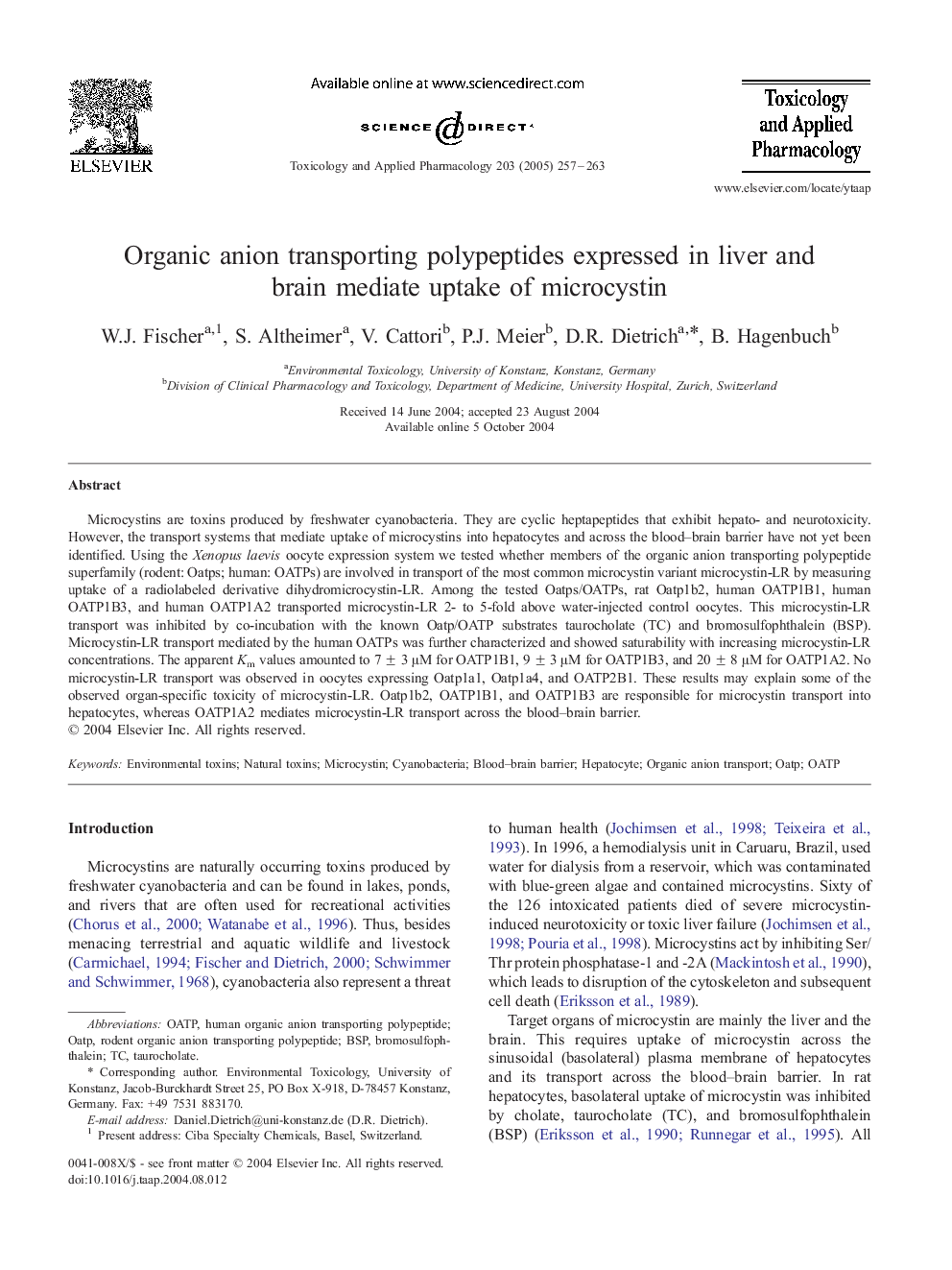| Article ID | Journal | Published Year | Pages | File Type |
|---|---|---|---|---|
| 9018403 | Toxicology and Applied Pharmacology | 2005 | 7 Pages |
Abstract
Microcystins are toxins produced by freshwater cyanobacteria. They are cyclic heptapeptides that exhibit hepato- and neurotoxicity. However, the transport systems that mediate uptake of microcystins into hepatocytes and across the blood-brain barrier have not yet been identified. Using the Xenopus laevis oocyte expression system we tested whether members of the organic anion transporting polypeptide superfamily (rodent: Oatps; human: OATPs) are involved in transport of the most common microcystin variant microcystin-LR by measuring uptake of a radiolabeled derivative dihydromicrocystin-LR. Among the tested Oatps/OATPs, rat Oatp1b2, human OATP1B1, human OATP1B3, and human OATP1A2 transported microcystin-LR 2- to 5-fold above water-injected control oocytes. This microcystin-LR transport was inhibited by co-incubation with the known Oatp/OATP substrates taurocholate (TC) and bromosulfophthalein (BSP). Microcystin-LR transport mediated by the human OATPs was further characterized and showed saturability with increasing microcystin-LR concentrations. The apparent Km values amounted to 7 ± 3 μM for OATP1B1, 9 ± 3 μM for OATP1B3, and 20 ± 8 μM for OATP1A2. No microcystin-LR transport was observed in oocytes expressing Oatp1a1, Oatp1a4, and OATP2B1. These results may explain some of the observed organ-specific toxicity of microcystin-LR. Oatp1b2, OATP1B1, and OATP1B3 are responsible for microcystin transport into hepatocytes, whereas OATP1A2 mediates microcystin-LR transport across the blood-brain barrier.
Keywords
Related Topics
Life Sciences
Environmental Science
Health, Toxicology and Mutagenesis
Authors
W.J. Fischer, S. Altheimer, V. Cattori, P.J. Meier, D.R. Dietrich, B. Hagenbuch,
